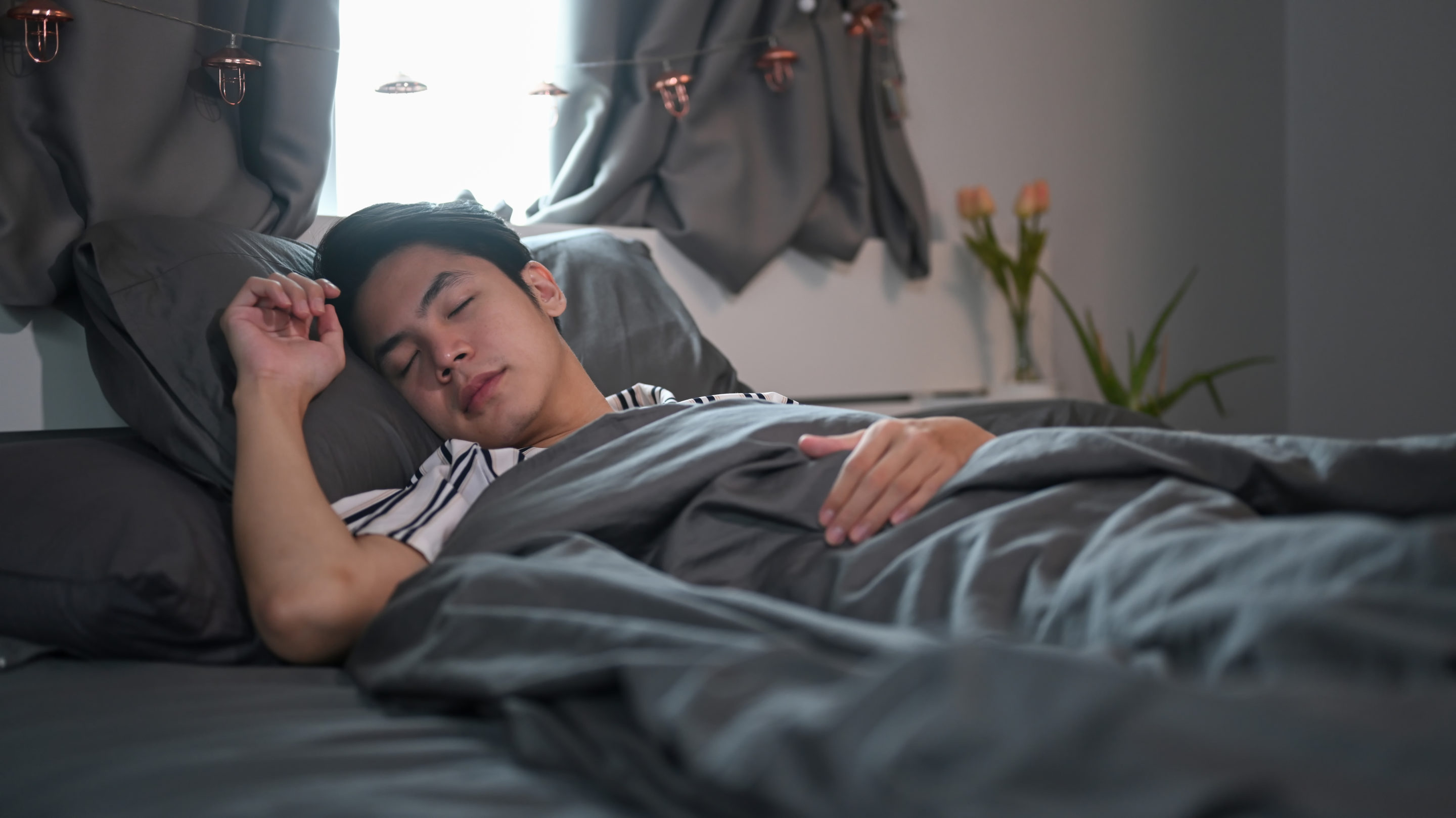It’s a well-known fact that people spend one-third of their lives sleeping, but for as much time as you spend sleeping, how much do you think about your sleeping position?
There’s a lot more to sleep than you may expect— we don’t just get comfortable in bed, fall asleep, and wake up in the morning. Your sleep position actually matters a lot when it comes to getting a good night’s sleep. That’s because your sleep position affects your sleep posture. And your sleep posture has a major effect on your sleep quality.
So what’s the best sleeping position for great sleep? Learn more about what sleep posture is, how your sleeping position affects your sleep, and the best sleep position.
What is Sleep Posture?
You’ve likely had an occasion or two when you slept “wrong,” and woke up in a world of pain. Similar to your posture during the day sitting or standing, your posture at night while sleeping ensures your body is in the correct alignment.
Your posture day or night is directly responsible for how your body feels. Poor posture leads to a stiff and sore body, or worse, pain. It can especially worsen any chronic pain you feel during the day.
For good sleep posture, you must support your body and allow your spine to follow its natural curves. These curves are in your neck, your mid-back, and your lower back. Your hips, shoulders, and head will all line up.
You don’t need to jump through hoops to achieve good sleep posture, but you should invest in the right pillow or mattress. They’re often to blame, especially if you’ve had them for a long time and they’re worn out.
When your mattress or pillow don’t feel comfortable, it’s a good idea to replace them with something more supportive.
If you’re not quite ready to replace your mattress, you can try a supportive mattress topper. It’s an easy and inexpensive way to ensure your sleep posture is healthy, supportive, and that you sleep in the right position.
There are many affordable pillows and mattress toppers on the market. We personally recommend the line-up of pillows, mattresses, and mattress toppers from Luma Sleep.
Related: How to Sleep Well If You Experience Chronic Pain
How Your Sleeping Position Affects Your Sleep
You likely don’t have one way you sleep at night. The ways you can position your body for a good night’s rest are as numerous and unique as each person out there.
Here are several of the more popular sleep positions as indicated by The Better Sleep Council, plus their pros and cons.
The Fetal Position
This is a popular sleeping position. Most Americans actually sleep in the fetal position— with women favoring the position over men. 54 percent of women sleep in this position, versus 39 percent of men.
One reason this position may be a popular choice is because the fetal position makes you feel as if you’re back in the womb. It’s a form of side sleeping, where you’re curled up almost in a C-shape— your head is down, your spine is curved, and your arms and legs are pulled closer to your body.
Although it’s many Americans’ nightly default position, it isn’t ideal for sleep posture. This is because of the curvature of your body when you’re sleeping in the fetal position. It disrupts the alignment of your head, shoulders, and hips, and can contribute to aches and pains the next day. It may also cause breathing issues, as being curled too tightly can restrict your diaphragm.
Although it isn’t ideal for sleep posture, it can work well enough if you don’t curl up too tightly. For better sleep in the fetal position, use a body pillow to keep your body in a loose and unrestrictive curl.
The Yearner Position
This is the third most popular sleep position, with 13 percent of Americans favoring this position. Here you lay on your side with both arms in front of you.
Sleeping on your side in the yearner position can be beneficial in relieving insomnia and body pain. In addition, sleeping on your side can help reduce snoring and sleep apnea symptoms.
Side sleeping is also recommended for pregnant women to sleep most comfortably and safely— particularly on the left side.
Side sleeping on your left side is also beneficial if you experience nighttime acid reflux or GERD symptoms.
The Log Position
Unlike the popular fetal position, very few people sleep in the log position. A mere 6 percent of sleepers report sleeping in this position. In the log position, you sleep on your side with your arms and legs straight, as the name suggests, like a log.
The Freefall Position
Almost one in five people are stomach sleepers, sleeping in a prone position or the freefall position. Here you lie on your stomach with your head to the side and your arms wrapped around or under a pillow. Despite its popularity, 26 percent of people believe it’s the worst sleeping position.
Be wary, if you’re a stomach sleeper, and experience lower back pain, as well as neck pain and shoulder pain— this may be the cause.
You may be more likely to toss and turn in this freefall position as well. However, it can reduce the risk of snoring and sleep apnea, so that’s something to consider if you or your bed partner have struggled with snoring.
The Soldier Position
If you sleep on your back with your legs straight and your arms lying close to your body, you’re in good company. It’s referred to as the soldier position, and it’s the fourth most common sleep position. Eleven percent of adults favor this position.
The good news, if you sleep in this position you’re less likely to change positions or toss and turn during the night. It’s also good for your spine and alignment. It’s a neutral sleeping position without unusual curves in your spine.
The Starfish Position
In the starfish position, you’re sleeping on your back similar to the soldier position. But instead of sleeping with your arms close to your body like you would in the soldier position, your arms are positioned away from the body and turned upward at a 90-degree angle.
Only 7 percent of sleepers report sleeping this way.
So Is There a Best Sleeping Position?
No, there is not. While one sleep position may be comfortable and supportive for some, it may be completely inadequate for others. The best sleeping position for each person depends entirely on their unique needs based on their physical or medical needs.
For instance, side sleeping can hint at more than just your preferred position while sleeping. It potentially points to an instinctive survival mechanism.
Many people with untreated sleep apnea prefer sleeping in a side position because it reduces compression of the airway, allowing for more oxygen to get in. If you’re a side sleeper, especially one who snores, you may want to dig deeper to find out if your preference for side sleeping goes beyond comfort.
Sleeping on your back can help keep your spine aligned, reduce pressure or compression throughout your body, and relieve sinus build-up. However, back sleeping can also cause lower back pain, or worsen snoring or sleep apnea symptoms.
Although there isn’t a “best” sleeping position in general, there’s likely a best position for you.
Your sleep position influences how healthy your sleep posture is at night, and sleeping in the correct position can be the difference between a restful night’s sleep, and dragging your feet during the day.
To learn more about how you can start sleeping and living better, contact us today at the Sleep Centers of Middle Tennessee.
References
“Starfish or Freefall? What Your Sleep Position Can Tell You.” The Better Sleep Council, 14 Apr. 2017, bettersleep.org/better-sleep/sleep-positions/.

